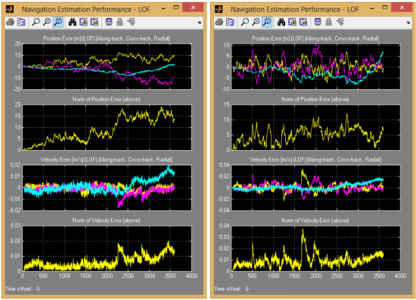Weak GNSS Signal Navigation on the Moon

Global Navigation Satellite Systems (GNSS) are already used in space missions (e.g. GOCE, Swarm, Sentinel, and MetOp, among others), not only as a navigation sensor (either for autonomous orbit and attitude determination or for relative navigation) but also as a science instrument (e.g. for altimetry, global geodesy, Radio Occultation and GNSS Reflectometry applications). However, its use is usually limited to orbits or mission phases below the orbits of GNSS satellites, since GNSS satellite antennas transmit mainly in the Earth's direction.
Recent missions and studies have shown that GNSS signals received from above the GNSS constellation can also be processed and their availability for navigation should not be neglected. Signal spill-over from GNSS satellites on the opposite side of the Earth and signals transmitted from GNSS satellite antennas' side-lobes have been successfully processed above GNSS orbit height.
Nonetheless, there are some important challenges related with the processing of GNSS signals for altitudes above the GNSS orbits, such as the low signal power, high dynamics and poor visibility and geometry.
Recent studies (as the GNSSGEO and GSTST projects) have shown that GNSS-based navigation for GEO and HEO missions is feasible and with relatively good performances, demonstrating its applicability to a wide range of space missions. Furthermore, and as confirmed by the ESA Lunar Exploration programme, a navigation solution based on the processing of weak GNSS signals could potentially increase the robustness of the navigation architecture of future lunar exploration missions and improve their autonomous operations capabilities.
